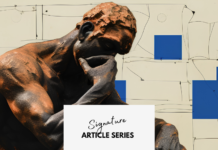We the People of the United States, in Order to form a more perfect Union, establish Justice, insure domestic Tranquility, provide for the common defence, promote the general Welfare, and secure the Blessings of Liberty to ourselves and our Posterity, do ordain and establish this Constitution for the United States of America.
These are the words that open the U.S. Constitution.
It’s a document that most Americans have never read in its entirety. Perhaps because it’s a bit like reading Leviticus, the back of a cereal box or a car manual. And yet this vital document frames our national functions. It guides American political machinery and guards our cherished principles. It’s about how “we the people” make America distinct and remain exceptional.
And yet, because of our public ignorance of the Constitution, many changes have been to our American political arena that’s transformed our nation. One of the greatest transformative changes has been in the Judicial branch…particularly the U.S. Supreme Court.
CO-EQUAL BRANCHES? NO.
Most Americans believe (or are led to believe) the three branches of government (legislative, executive, judicial) are co-equals. They operate like God the Father, Jesus the Son and God the Holy Spirit in Christian theology, but that triune idea is greatly mistaken.
The three branches of U.S. government, constitutionally outlined in the first three articles, are delineated and weighted by order, role and function. The Legislative branch (first article) has ten sections of content with 2,266 words. The Executive (second article) has four sections of content and 1,023 words. The Judicial (third article) has a mere three sections to describe its role and function totaling a skimpy 375 words.
Essentially, our Founders weighted the Legislative branch with priority of function and role, then the Executive and, finally, the Judicial. E. William Giles noted well the inequality of the Judicial branch in his comments on the Constitution:
Is that [the Judiciary department] formed by the Constitution? It is not…It is only declared that there shall be such a department, and it is directed to be formed by the two other departments, who owe a responsibility to the people….The number of judges, the assignation of duties, the fixing of compensations, the fixing the times when, and the places where, the courts shall exercise the functions, &c., are left to the entire discretion of Congress.[1]
Essentially, our Founding Fathers intentionally designed the American political machine to be ruled through the Legislative branch (House of Representatives and Senate) and Executive branch (President)—all of which are elected through “we the people.”
THE S.C.O.T.U.S. DOES NOT RULE
Because the Judicial branch–which includes the Supreme Court–is the weakest branch, it does not make law (that’s Congress’s job) nor rule by “executive orders” (like the President).
In fact, it is subservient to the other two branches. Nathaniel Chipman, an early U. S. federal judge and Chief Justice of Vermont Supreme Court, recognized the terrible consequence of a “ruling” Judiciary: “If the judges are made thus independent…they will become a dangerous body.”[2]
The sole work of the S.C.O.T.U.S. is to issue opinions on appeals not settled in lower courts. It’s a popular fallacy to believe the S.C.O.T.U.S. makes the “law of the land.” It doesn’t even “rule” as a judiciary body. Its original Constitutional function was to opine. “It is the opinion of the Court” not “the ruling of the Court.”
It’s why prior to Franklin D. Roosevelt, many U.S. Presidents, senators and congressmen outright ignored S.C.O.T.U.S. decisions. For example, in the infamous 1857 Dred Scott decision that excluded blacks from American citizenship, Abraham Lincoln (Executive Branch) disregarded the opinion of the S.C.O.T.U.S. Instead, he issued his own executive order (“Emancipation Proclamation,” 1863) that pronounced all slaves free. Then, after winning the war, a Republican Congress and the States ratified the 13th (1865) and 14th (1868) Amendments to outlaw slavery and gave citizen rights to blacks. “We the people”—through ratification—amended the U.S. Constitution so that any future S.C.O.T.U.S. was forced to interpret racial laws through our national desire. This is where and how a “we the people” majority rules.
A WEAK AND DEPENDENT BRANCH
According to the U.S. Constitution and the Federalist Papers (which describe it), the Judicial branch is intentionally weak and purposely dependent upon the other two branches of government:
The judiciary, on the contrary, has no influence over either the sword or the purse; no direction either of the strength or of the wealth of the society; and can take no active resolution whatever. It may truly be said to have neither force nor will….The judiciary, from the nature of its functions, will always be the least dangerous to the political rights of the Constitution….[T]he judiciary is, beyond comparison, the weakest of the three departments of power. . . . [and] the general liberty of the people can never be endangered from that quarter.[3]
The S.C.O.T.U.S. was so historically inconsequential that unlike the Executive and Legislative branches of U.S. government, it did not have permanent housing for 145 years. Until Washington, D.C. was built, the land’s highest court resided in Philadelphia. Between 1810 and 1860, the S.C.O.T.U.S. met in the basement of U.S. capitol before moving to occupy an old Senate chamber (1860-1935). In 1935, the S.C.O.T.U.S. packed its robes and moved to a building behind the U.S. Capitol.
This transition signaled a shift in the power of the Judicial branch.
Since the F.D.R. administration, the S.C.O.T.U.S. has gradually grown in influence. However, this wasn’t the original intent. It’s why for 145 years, our nation’s highest court met in basements and vacated chambers. It was intentionally the weakest of the three branches of U.S. government. It wasn’t designed for power but for correction, it wasn’t meant to rule or make law but to opine and hold all law against the Constitution.
Rufus King, a signer of the Constitution and framer of the Bill of Rights clearly stated this intent: “The judges must interpret the laws; they ought not to be legislators.”[4]
The sole purpose of the Judiciary branch was to be the people’s “checks and balances” and “faithful guardians of the Constitution.” If the Legislative and Executive branch got out of control, even tyrannical, the Judiciary would serve our purposes to void their unconstitutional laws. The S.C.O.T.U.S. couldn’t make or enforce law, but they could end bad ones. This idea of “judicial review” was the result of the landmark Marbury v. Madison case (1803).
A GOOD JUDGE IS A GOOD JUDGE
According to Article 3, justices serve as long as they maintain “good behavior.” They cannot be removed for unpopular decisions, opinions or views. Justices serve in their seat for life, unless impeached and removed by Congress. In U.S. history, fifteen federal judges–all lower court justices–have been impeached and eight removed from office.
In the past judges were removed not just for criminal behavior but for personal misbehavior, including rudeness to witnesses, drunkenness, profanity or excessive authoritarian abuse.
Justice James Iredell noted: “Every government requires it [impeachment]. Every man ought to be amenable for his conduct….It will be not only the means of punishing misconduct but it will prevent misconduct. A man in public office who knows that there is no tribunal to punish him may be ready to deviate from his duty; but if he knows there is a tribunal for that purpose although he may be a man of no principle, the very terror of punishment will perhaps deter him.”
Essentially, justices could be as easily removed as they were appointed.
FLIPPING THE COURT
It’s clear that “we the people” give both federal and the S.C.O.T.U.S. more constitutional power than these bodies deserve. We need to restore original intent for the Judiciary branch.
Thomas Jefferson concluded: “When the Legislative or Executive functionaries act unconstitutionally, they are responsible to the people in their elective capacity. The exemption of the judges from that is quite dangerous enough. I know no safe depository of the ultimate powers of the society but the people themselves; and if we think them [the people] not enlightened enough to exercise their control with a wholesome discretion, the remedy is not to take it from them, but to inform their discretion by education. This is the true corrective of abuses of constitutional power.”[5]
Exactly.
The U.S. Constitution begins with “we the people.”
And it must end with us, too.
[1] The Debates and Proceedings in the Congress of the United States (Washington: Gales & Seaton, 1851), Seventh Congress, 1st Session, February 18, 1802: 585-586, 593.
[2] Debates and Proceedings,1851), January 19, 1802: 131.
[3] James Madison, John Jay & Alexander Hamilton, The Federalist (Philadelphia: Benjamin Warner, 1818), pp. 419-420.
[4] The Records of the Federal Convention of 1787, Max Farrand, editor (New Haven: Yale University Press, 1911), Vol. I, p. 108, from Rufus King’s records of the Convention from Monday, June 4, 1787.
[5] The Writings of Thomas Jefferson, Andrew A. Lipscomb, editor (Washington, DC: The Thomas Jefferson Memorial Association, 1904), Vol. XV, p. 278, to William Charles Jarvis, September 28, 1820.




